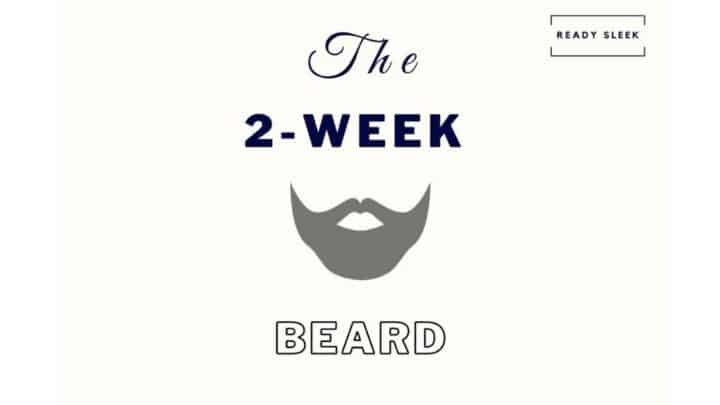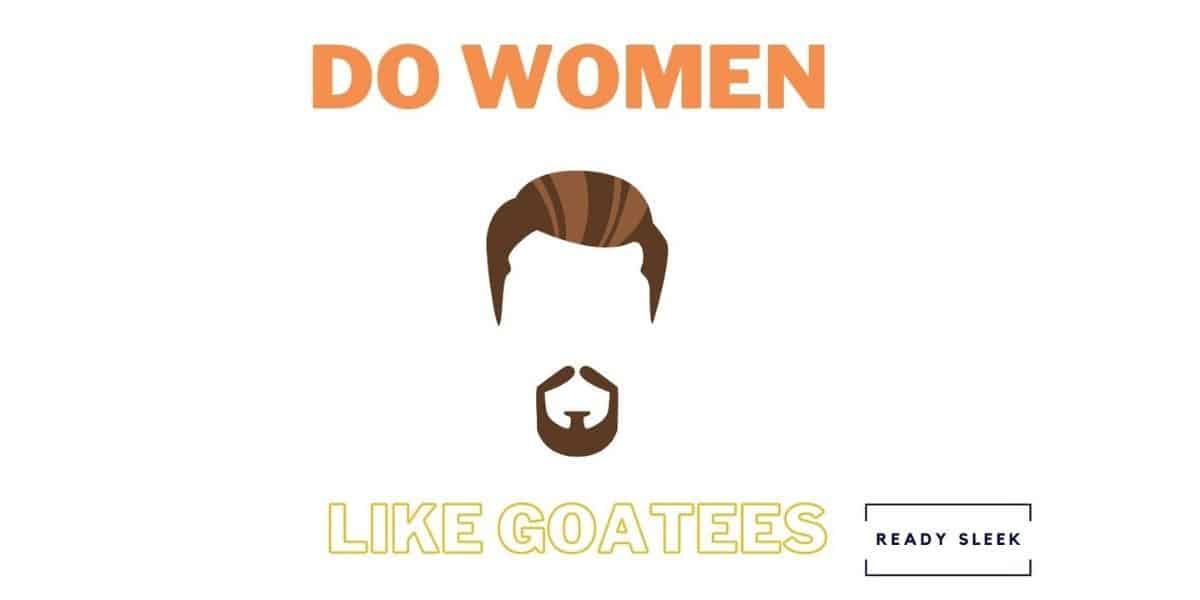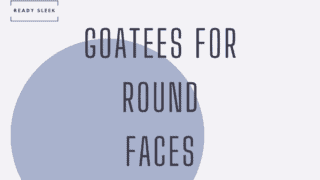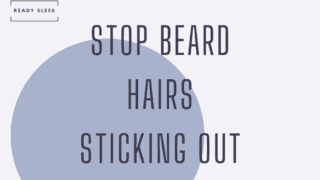Having a vague idea of what to expect on a bearded journey is always a good idea. A basic timeline is worth getting to grips with. You’re about to learn everything you need to know about the 2-week beard.
To put it bluntly, it isn’t everyone’s favorite.
It can be a pretty awkward period to get through, although some men definitely find it easier than others.
Patchiness and itchiness are the two main culprits when it comes to the 2-week beard. But push through it. With proper grooming bearded glory lies just over the horizon.
Here you’ll be finding out what your beard will look like after 2 weeks, as well as the average length you can expect it to have grown to by this point as well.
In addition, I’ll be giving you some maintenance tips to help you get past this phase in the most effective way possible.
What Does Average 2-Week Beard Growth Look Like?
It usually looks something like this:

(Photo From DepositPhotos)
The 2-week beard is longer than heavy stubble but not quite long enough to be labeled a “short beard”.
As you can see from the photo, a lot of men pull off this general length range pretty well. But there are plenty of men who find that this beard phase is riddled with patchiness and thin or bare areas.
But the majority of these troubled beardsmen find that after around Week 4 their beard starts to look fuller. In other words, they finally feel as though they’re escaping the awkward phase.
So if you find the 2-week beard a little frustrating, just know that it’s temporary and you shouldn’t reach for that beard trimmer just yet.
How Much Does A Beard Grow In 2 Weeks?
After 2 weeks you can expect the beard to have grown approximately 7 to 8mm.
Of course, men vary a lot when it comes to the rate of beard growth. Some men will have a little more growth after 2 weeks, while others may have a little less.
But on average, 7 to 8mm is a pretty safe bet.
This may not sound like much. In fact, when looking at the facial hair you’ve grown by this point you may feel as though it looks like more.
But 2 weeks really isn’t a very long time when it comes to beard growth.
Patience is a virtue. Give it time – it’ll be Viking-esque before you know it.
Is A Patchy And Thin 2-Week Beard Normal?
After 2 weeks of growth, a patchy beard is very common.
It’s still finding its way, having left the comforts of heavy stubble range but not quite being full or long enough to be considered a proper short beard.
After two weeks, certain parts of the beard will be visibly shorter than other parts. Beard hair doesn’t grow at the same rate throughout.
The shorter areas will look thinner than the longer areas in comparison. But give it a couple more weeks and you should notice things starting to even themselves out.
In other words, the patchy appearance should start to fill itself out.
Having said all of this, if you do feel as though you’ve got general patchiness or loss of hair on your scalp, face, or body, do consider getting advice from a clinician.
How To Maintain A 2-Week Beard
There are plenty of men who like this length of facial hair and want to maintain it on a day-to-day basis.
They don’t see it as a phase to get through. They actually like the look and the length and want to keep it long term.
To do this, you’ll need to trim it down to the correct 2-week length regularly. Here’s a simple routine you can use to achieve this.
You’ll need a beard trimmer capable of trimming down to between 7-8mm in length (the approximate 2-week length). If you don’t have this, a length as close as possible to this will be fine.
A stubble trimmer like the Philips Norelco Oneblade (Amazon Link) would be ideal as it gives you very precise control over short lengths like these.
1. Grow It Longer First
This may sound obvious, but in order to trim down to a 2-week beard length, you’ll want to grow it longer than this first.
So, grow your beard out for 2.5 to 3 weeks. By the end of this period, you should have around 8 or 9mm of length.
The perfect length to trim down from.
2. Wash The Beard
Even at these relatively short lengths, clean beards are just easier to trim than unclean beards.
Any grease, grime, or excess oil should be rinsed out – washing with simple lukewarm water is enough.
This should allow the blade of the trimmer to glide effortlessly through the beard; less friction, less irritation, and a more effective and even trim.
3. Trim It All Down To Around 7mm
Set your trimmer down to 7mm. If you’ve got a stubble trimmer, chances are you’ll be able to do this.
If you just have a regular beard trimmer, there’s a chance you may not have a 7mm setting. That’s fine – a millimeter or two longer or shorter isn’t the end of the world.
Just try and get as close to that figure as possible. After all, we’re looking to trim down to the average 2-week length.
You can start trimming the cheeks and work your way down to your chin or vice versa. It’s really up to you.
Trim against the grain – in other words, against the direction of growth.
Just be sure to vary the angle of the blade. Beard hair grows in all sorts of directions, so vary the angle you trim from to get as many of the hairs as possible.
4. Vary The Length Slightly (If Possible)
Varying the length very slightly in different parts of the beard is a great way to get a really sleek finish.
The reason for this is that certain areas of your beard will be thicker than others. For example, cheek hair is notoriously thin and patchy, particularly at this awkward 2-week length.
A good way of making it look thicker is to keep it long relative to the chin hair and mustache.
For example, keep the cheek hair at 7mm (which it should currently be after the last step) and trim the chin beard and mustache down to 6mm.
This will make the cheek hair look thicker than it otherwise would.
If you’ve got a stubble trimmer, this will most likely be possible. You’ll be able to vary the length by a millimeter wherever you want to. As I mentioned, stubble trimmers give you a lot more control when maintaining these short lengths.
Interestingly, varying the length slightly in this way is a good way of making the beard look more even. Thin and thick areas look more equal to each other, simply by changing their length.
Ironic, right?
5. Define The Borders
By “borders”, I’m referring to the neckline and cheek lines.
The neckline is the lower border of your 2-week beard. It’s where the neck hair meets the skin below it.
To cut straight to the chase, you don’t want a neckbeard. A “neckbeard” is that unsightly layer of hair that forms over the neck and starts crawling toward the chest.
It needs to be removed. What you need is a well-defined neckline with no hair beneath it.
It’s best to trim this line by outlining it with the lone blade of your trimmer first (i.e with no guard attached) and all the hair the lies beneath it.
The cheek lines are the upper borders of the beard. You can choose to keep them natural or define and sharpen them up instead.
For the slickest and sharpest finish, use a manual razor to shave beneath the neckline you’ve just trimmed. This should get rid of any remaining neck stubble. Be sure to use shaving gel or cream if you’re using a manual razor.
Trimmers are great but they can only trim so short – they’ll usually still leave around 0.4-0.8mm of hair, even if you trim without any guard attached.
This is very short stubble and is barely noticeable. But shaving beneath the neckline after you’ve trimmed it will still give you the cleanest finish.
Grooming Tips For The 2-Week Beard
Here are a couple of final tips for grooming a two-week beard:
- Consider beard oil. Yes, even on short beard lengths such as this it has its benefits. It’s softening and moisturizing. Many feel it’s even worth applying it on stubble.
- Buy a boar bristle beard brush (but don’t brush yet). Start brushing once you’ve got 3 to 4 weeks of growth. If you’re simply maintaining a 2-week length, you won’t need one.
Conclusion
There you have it. Hopefully, everything you wanted to know about this beard length.
It may be one of the less popular and more “awkward” lengths, but there are plenty of men who wear it well.
Enjoy.
Ready Sleek founder. Obsessed with casual style and the minimalist approach to building a highly functional wardrobe. Also a fan of classic, vintage hairstyles.







